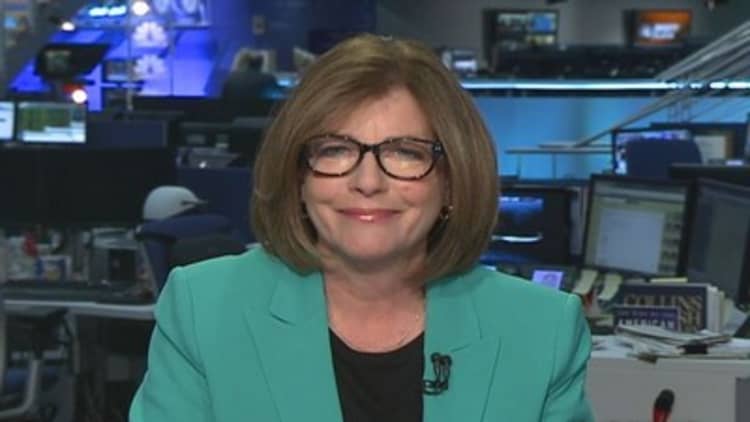Small caps waffled Tuesday, leading some to say the big bounce Monday was purely a head fake rally.
But the jury is still out on whether the Russell's nearly 2.4 percent jump Monday coming after the index reached the 10 percent correction zone Friday was a rally back, after capitulation. On Tuesday, the Russell slumped, closing 1 percent lower at 1121, while big caps pressed on to close at record levels for a second session.
"The only thing you have right now is the stability holding the low," said Andrew Burkly, head of institutional portfolio strategy at Oppenheimer Asset Management. "Regardless, the bigger thing is that the idea of the leadership baton being passed to the large caps is lasting. I think (small caps) they're going to lag to the upside but you could make a case where they're going to drag on the downside. Either way, they're going to underperform."

The divergence with the big-cap indexes rising and the tech, small cap, biotech and discretionary names in the Nasdaq and Russell 2000 lagging reached an extreme last week. Monday's turnaround lifted some of the names that have been bashed the most but some traders were skeptical.
"It's a kind of wait and see. You have to see what happens in the next leg," said one trader, who said there was a lot of short covering behind the move higher Monday.
Read MorePimco sees an end to bull markets as we know them
The and Dow were higher Tuesday, with the S&P crisscrossing the psychological 1,900 level for the first time. It ended the day up just under 1 point at 1897, and the Dow was up 36 points at 16,715.
But the selling in some momentum names continued, and the Nasdaq finished the day off 13 points or a third of a percent lower, at 4130.
However, others on the Nasdaq gained like Facebook, Netflix and Tesla. Losers included LinkedIn and the widely watched iShares Nasdaq Biotech ETF IBB.
Art Cashin, UBS director of floor operations, warned in a quick midday note that if the Nasdaq composite were to fall through 4,120, that "could turn to contagion." The Nasdaq was trading more than 10 points above that level but was lower on the day in afternoon trading.
There are signs that the Russell 2000 is exhibiting topping behavior, says MacNeil Curry, head of global technical strategy at Bank of America Merrill Lynch.
"This is a short-term phenomena. I think any type of rally will prove temporary, short term and corrective. We could continue higher in the near term, but it's likely to prove temporary because the larger process is turning bearish," he said.
"I think at this stage, we're completing a head and shoulders, and we're turning medium-term bearish," said Curry, noting the formation signals the top of a trend. He said the break in the neckline was just under 1,100—a key level the market is watching for support.
The right shoulder is still unfolding, and if the formation is completed on a break below 1,095/1,080, the Russell could move to a support level at 1,057, its five-year trend line. If the selling continues, it could reach 975, he said.
Technicians have also been watching the Nasdaq composite for a similar pattern.
Curry said there are other red flags for the market, including the fact that 68 percent of the NYSE-listed stocks are above their 200-day moving average, down from the peak of 82 percent a year ago.
There is also a seasonal disadvantage for stocks, illustrated by the "sell in May" phenomena, which warns traders to get out of the market through the summer, until the uptrend resumes in the fall. But Curry said this year, the seasonality is even more negative with the midterm election to contend with and historically, the summer before that is usually choppy.
As for the S&P, he still sees it going higher. and it could reach 1,920, he said. "It should be pretty bullish from here. The bigger story is the divergence and the persistent divergence," said Curry.
BTIG chief global strategist Daniel Greenhaus said it's unclear whether the Russell has bottomed. He said the index could test 1,100. "I think six months from here, it's higher," he said.
But while caution prevails as the Russell sets its course, many analysts remain positive on the large-cap sector of the market.
"I think there are plenty of people who will take the argument that the weakness you see in the Russell is going to pull the strength down," Burkly said. "I don't see it that way. I think the strong are going to pull up the weak. Either way I don't like them (small caps)."
—By CNBC's Patti Domm. Follow her on Twitter @pattidomm.


